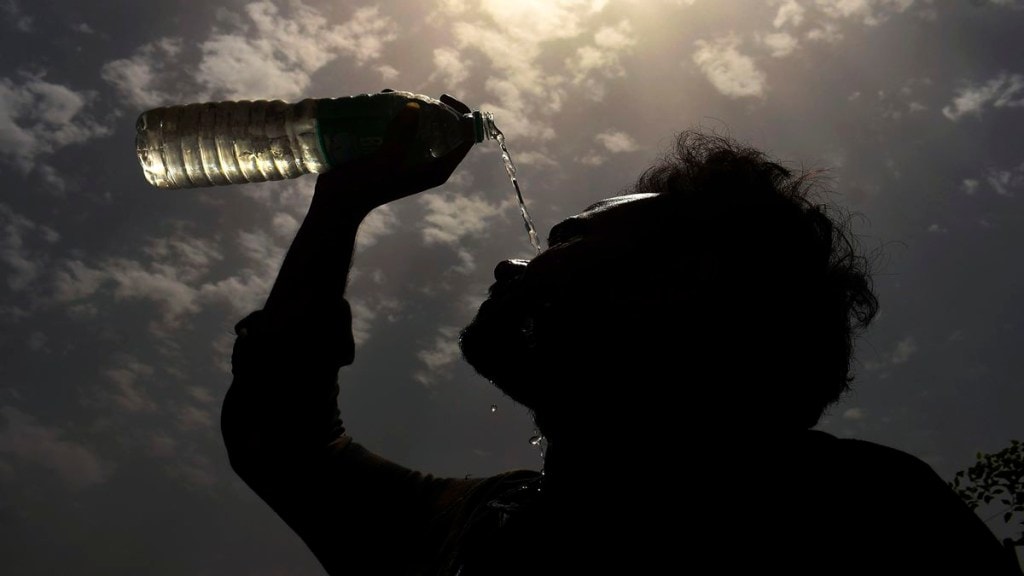Heatwave in India: The rising temperature due to the ongoing heatwave across India is making lives unbearable. Amid the ongoing heatwaves in the national capital, the India Meteorological Department (IMD) has elevated its warning in Delhi to a ‘red’ alert from the previously issued ‘orange’ alert.
India has recorded 56 deaths from 24,849 suspected cases of heat stroke between March and May, according to data from the Union Health Ministry. According to the data compiled by the National Centre for Disease Control (NCDC), 46 of these deaths were recorded in May alone (till May 30).
Between May 1 and 30, 19,189 suspected heat stroke cases were reported in the country, it said.
A recent UN report revealed that Asia was among the world’s most disaster-hit region from weather, climate and water hazards in 2023, the United Nations said on Tuesday, with floods and storms the chief cause of casualties.
In 2023, over 80 per cent of reported hydrometeorological hazards in Asia were flood and storm events, the report said. According to the ‘The State of the Climate in Asia 2023’ report, prolonged heatwaves affected South and South-East Asia in early summer. In India, severe heatwaves in April and June resulted in about 110 fatalities due to heatstroke.
What is heatstroke?
Heat stroke is the most serious heat-related illness. According to the Centers for Disease Control and Prevention (CDC), heatstroke occurs when the body can no longer control its temperature: the body’s temperature rises rapidly, the sweating mechanism fails, and the body is unable to cool down.
“When heat stroke occurs, the body temperature can rise to 106°F or higher within 10 to 15 minutes. Heat stroke can cause permanent disability or death if the person does not receive emergency treatment,” the US health agency stated.
According to Dr. Tushar Tayal, Lead Consultant, Department of Internal Medicine, CK Birla Hospital, Gurugram, the past couple of months have seen exceptionally high temperatures and it is still continually rising.
“In addition to it, the humidity is also rising with monsoon season approaching. In this hot season, our body sweat does not evaporate easily. The inability of our sweat to evaporate in hot and humid weather prevents our bodies from cooling down, which raises the risk of heat stroke and other heat-related disorders,” Dr. Tayal told Financial Express.com.
What are the symptoms?
Symptoms of heat stroke include:
- Confusion, altered mental status, slurred speech
- Loss of consciousness (coma)
- Hot, dry skin or profuse sweating
- Seizures
- Very high body temperature
- Fatal if treatment delayed
How to prevent heatstroke?
Heatstrokes can be prevented by taking proper precautions, D. Tayal maintained.
“Firstly, avoid going out during peak time i.e. anytime between 12 noon to 4 pm. If going out is absolutely unavoidable ensure carrying an umbrella and putting on your sunscreen. Also, covering up yourself as much as you can do. Wear cotton clothes as they are more breathable and are light and comfortable. Secondly, drink plenty of fluids throughout the day, even if you don’t feel thirsty. Avoid sugary drinks, coffee and alcohol as they dehydrate your body,” Dr. Tayal told Financial Express.com.
Heatstroke is predictable and preventable. According to Mayo Clinic, the following steps should be taken to prevent heatstroke during hot weather:
- Wear loose-fitting and lightweight clothing
- Use a broad-spectrum sunscreen with an SPF of at least 50. Apply sunscreen generously, and reapply every two hours if you’re swimming or sweating.
- Stay hydrated will help your body sweat and maintain a normal body temperature.
- Go outside when the sun is low and the air is at its coolest
- Keep your home cool

